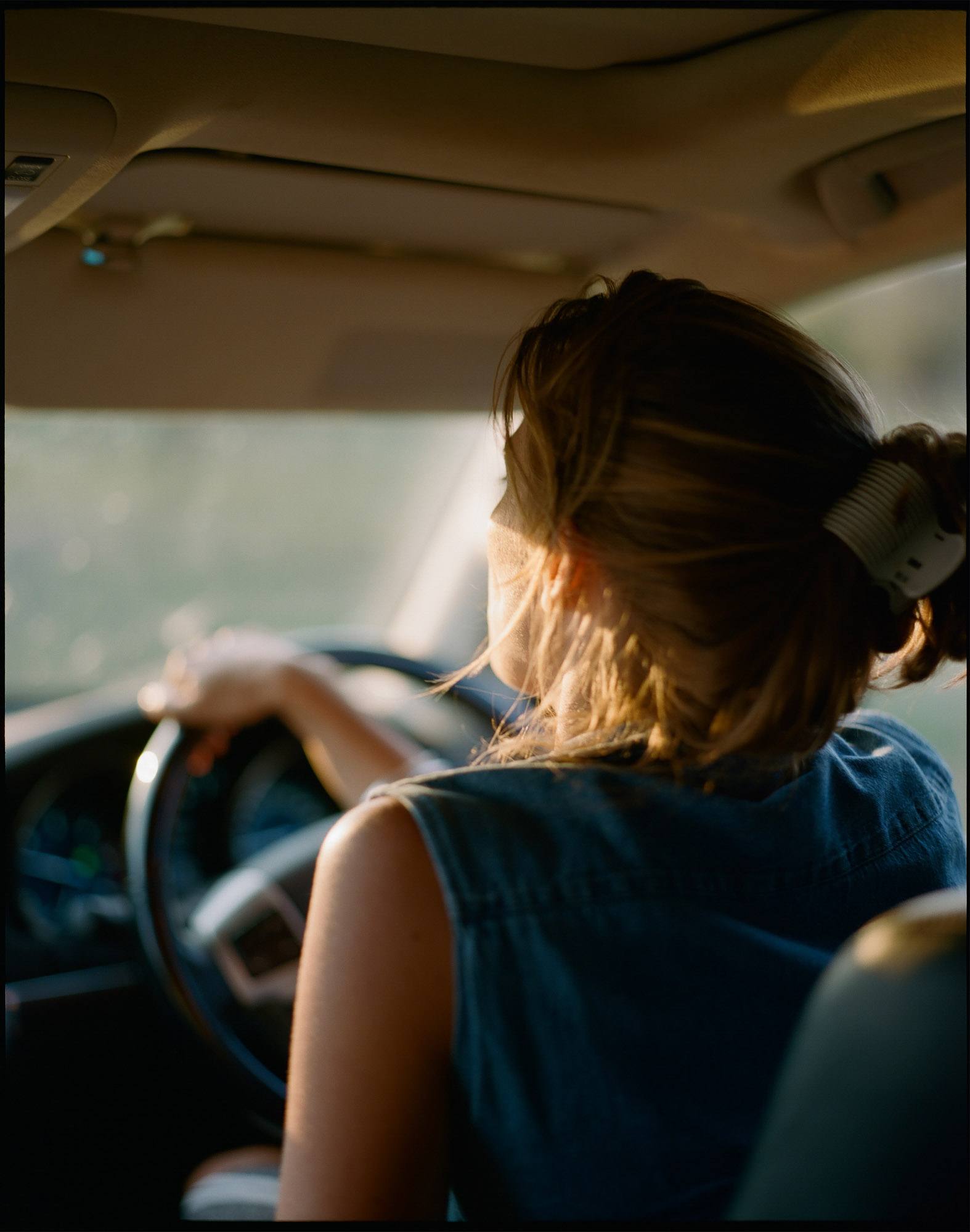CommunityConversationsCultureLondonPhotographyTravel
A Photographer’s Moveable Feast
By Finlay Renwick
Jul 13, 2022

“Being a photographer is one of the last ways to actually explore the world for a living without needing a trust fund. Well, there are are still a lot of photographers with trust funds… but I’m not one of them!” says the non trust fund-funded photographer James Harvey-Kelly, sat behind a small table in the corner of a Soho gallery, his puppy, Nacho, a working cocker spaniel the colour of brown suede, dozing to one side. “It gives you a license to be in the world, to explore things you’re interested in. I’m not necessarily solving problems with my pictures, but I like to think that I’m showcasing the more optimistic parts of the world. An optimistic way of living.”
If a word was to sum up the photographer’s first exhibition, now on at Soho Revue, optimistic would be a good one. Shot on 35mm over the course of a decade of travel, Harvey-Kelly’s photos are warm and fun and glamorous, in a slightly elegiac way. Some are intentionally blurry, snapshots from the back of a car or in the thick of a party. Photos taken at the beginning of the day as the sun breaks, or at dusk, that fabled photography ‘golden hour.’ Strands of blonde hair falling against a woman's shoulder; the blur of a dirt bike kicking up grey dust in rural Australia; an ancient expanse of terracotta-coloured mountain with a shard of late afternoon light cutting across it. Harvey-Kelly refers to them as gestural. “Like these little observations, curating things around you. Rather than ‘making’ pictures, they're almost more the idea of pictures. Like scribbling an idea for something on a napkin? Quite simple and pure.”



As an in-demand fashion photographer, Harvey-Kelly has shot for How to Spend It, Ralph Lauren, Kennedy Magazine and, yes, Drake’s. In fact, the first photo for the show came off the back of a trip to Charleston, South Carolina, that he took for a Drake’s campaign. “I was driving early in the morning when I noticed a puddle on the side of the road and that's the reflection of the sunrise,” he says, gesturing to the gallery wall, the pale blue and orange of a Deep South sky reflected in a humble puddle. “It’s quite abstract. It’s quite strange and also quite serene, which I liked.” While his professional work is based around portraiture, this series is a deliberate departure, with people appearing briefly and candidly. The back of a head in a car, a group of friends having breakfast at a distance, the bow of a boat off the coast of Capri on a perfect summer’s day; his father smiling inquisitively from a shallow sea and a handful of Stephen Shore-ean snaps of plates, table cloths and half-finished meals. It’s a travel album and a scrapbook. Rows of photos are pinned by magnets against a metal board, simulating the way a developer might hang photos in a dark room. “I never really had a theme,” he says, “it just started off as one photo and then another. I had piles of negatives and all of these memories and experiences that I wanted to curate somehow."
“I want my pictures to feel quite gentle and quite ponderous,” he adds, now guiding me around the space. He’s wearing shorts and a denim shirt and has a big voice and a barrel chest. Nacho pads alongside us, only occasionally veering off to inspect a bin that might need tending to. "I mean, it's a word which is used in the most generic sense, but in some way I want these photos to feel timeless. I feel like that takes a degree of emotional development to achieve, which is something that I didn’t have when I was 22."




A group of teenagers peer through the glass and then amble off, outside the footfall of Soho carries on. We’re smack bang in between the dwindling sex shops and beaded curtains guarding the peep shows of old Soho, but also a new Co-op and the hammer and rumble of Central London development and erosion. “Cameras, as objects, are simple,” he says. “Even the complicated ones are just boxes with a few knobs on them and, depending on how you change those things, you’re going to get different results. The thing that makes really good photography, as opposed to really mediocre, or even bad photography, is having an opinion about the things you're looking at. I think that's that's something that takes time."
We stop and look at the photo of the mountain, the terracotta-coloured one with the shard of golden light. It was taken in the Himalayas. “There’s something really soothing about it,” says Harvey-Kelly, going back there. “It’s steady and monolithic. I feel like you could be there, looking at this scene, at any time and the mountain would always look like that. The sky would be blue and the light would be falling across it in just the same way. Like it’s always been there. Like it will always be there."




